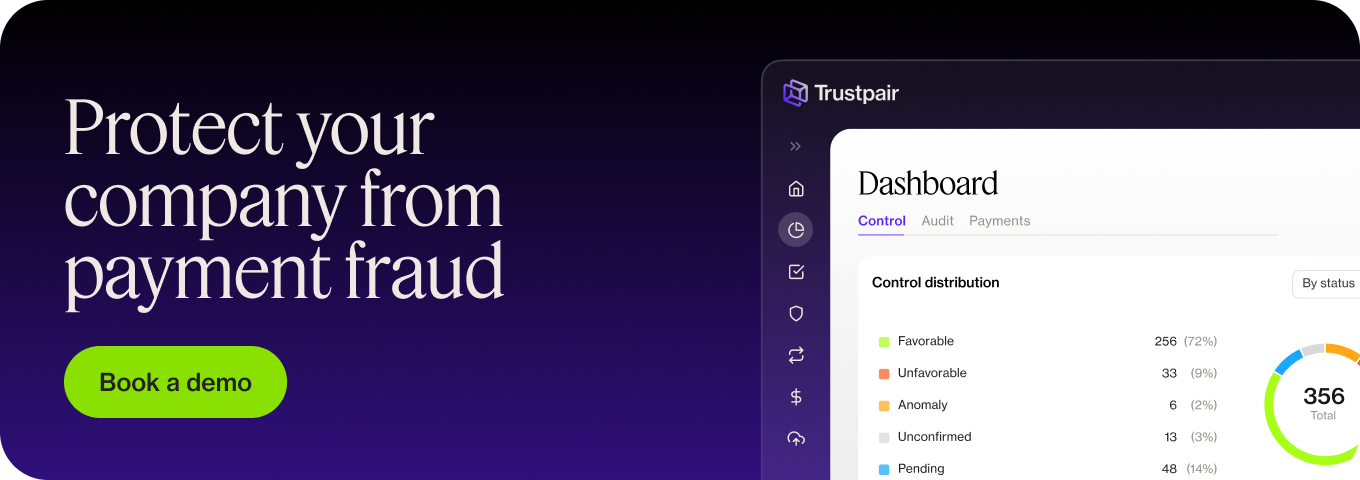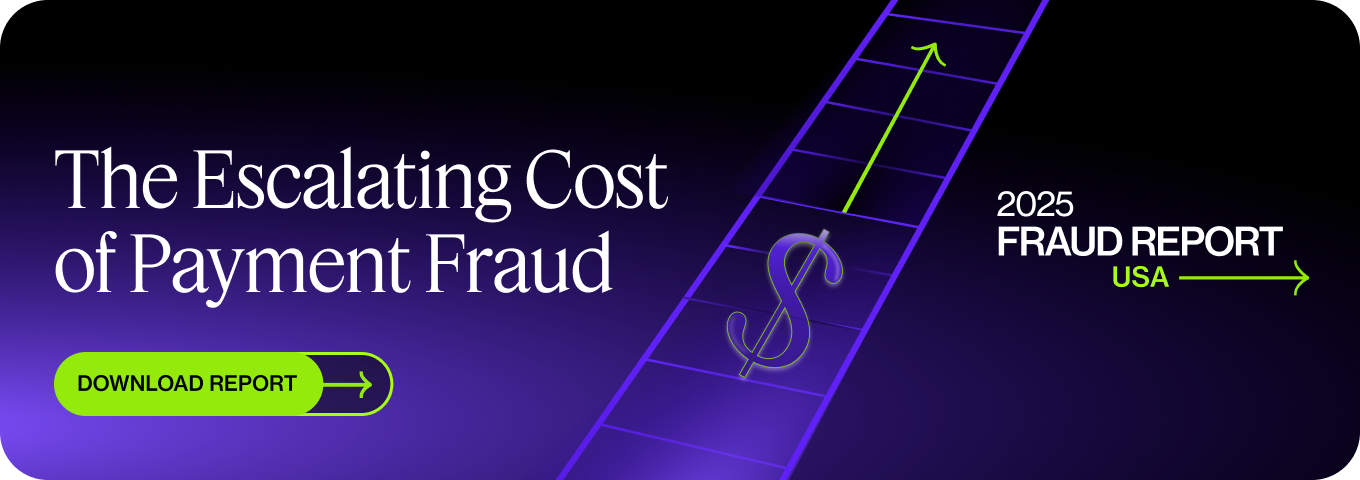At a time when it’s more important than ever to keep the focus on cost savings, C-suite executives turn to financial process automation to optimize their business processes. A mix of automation and Artificial Intelligence, finance process automation helps streamline tedious processes by creating simple automated workflows. Keep reading to find out what financial process automation is, how it works, what are its main benefits and how to implement it efficiently.
Trustpair is an anti-fraud automation solution that secures your P2P process from end to end. Contact one of our fraud experts to learn more!
What is financial process automation and how does it work?
Financial process automation definition
Financial process automation is a cutting-edge type of finance automation.
It’s about executing your financial processes with the assistance of Robotic Process Automation (RPA) and/or Artificial Intelligence.
RPA is an automated way of executing simple but tedious tasks, like purchase order matching or payment reconciliation. The aim of robotic process automation is to create a workflow for repetitive tasks, so you don’t have to deal with them manually.
The other component of financial process automation – AI – is more intelligent and integrates a Machine Learning (ML) component. It helps with spotting patterns and even making predictive analyses.
Concretely, you can use a combination of both to create automated processes for your financial department and organization at large. An automated financial reporting process for instance, that’ll simplify regulatory compliance.
How does Financial process automation work?
Your financial process automation should be as unique as your company is. It’s here to optimize your business processes, so it needs to be tailored to what you precisely need. If you have a complex business, you’ll need several layers of financial process automation.
That being said, many large corporations nowadays use:
- Accounts payable automation,
- Account receivable automation,
- Payroll automation,
- Reconciliation automation,
- Or even processing automation as part of your KYC process
Any part of your financial process can benefit from financial process automation. Take financial safety, for instance: an essential process to protect yourself against fraud and remain compliant.
Instead of having to check all your third party’s information manually before every payment campaign (which is where the risk of fraud is the highest), you can use anti-fraud software like Trustpair.
Trustpair integrates into your payment chain and secures your P2P process. We automatically and systematically check your third party’s information, ensuring the bank account’s validity and correct ownership. Our software checks your vendor’s information against databases internationally, and our machine learning component helps detect any fraud attempt. All of that is in real-time.
This amount of work would be virtually impossible to do manually, even by the most skilled financial employee. It’s a good example of the benefits of digital transformation for companies.
Integrating software into your financial process has several benefits, which we’ll go over in detail below.
Benefits of financial process automation
Cost reduction is on every financial expert’s mind. Tasked with managing the precious resources of their company, financial executives like you help make the big decisions that’ll impact your organization in the long run.
So: why should you use financial process automation? Here are some of the benefits of incorporating it into your business:
Increase your operational performance.
Leveraging financial automation in your company leads to optimizing your business processes.
Some financial processes can be long, tedious, and error-prone. According to Automation Anywhere, 10 to 25% of an employee’s time is spent on repetitive computer tasks – where RPA can reduce these labor-intensive tasks by 80%.
When you switch to workflow automation, you not only save time for your team but also the time they’d need to go back and correct their mistakes.
Because when you do data capture or management manually, human errors happen – that’s just how it is. Irremediably, manual tasks create a bottleneck in your process.
Automation adds some flow back into your business processes. Swap manual data entry for automated one, and you get an optimized workflow for your business.
Time savings can then be used for more strategic planning, which adds more value to your company, as well as your employees. A lower turnover can be expected in return: that’s a win-win!
In China, EY helped a team implement robotic process automation for their VAT filing. Their solution included the actual filing process without human intervention, but also a data analysis team. The results? Their client’s process went from about 1,400 hours to 280 hours a year. The team also reported higher morale and motivation.
Financial process automation can turn your most unstructured business process into a smooth workflow. It’s one of the key trends of finance digitalization and has a significant impact on finance teams. It also means it’s better for your compliance, as using software solutions leaves an audit trail.
Get more reliable data.
When using financial process automation, you gain accuracy because machines rarely make mistakes.
There are no errors that come from computing. But you also get access to better data to base your decisions on. And as we know, data management is a real strategic issue for financial teams worldwide.
When adding financial process software, you need to ensure it connects to your current finance tech stack. Some software (like Trustpair) do it natively by integrating with ERPs like SAP or Oracle.
What does that mean? All your data is centralized, and you know it’s correct. No more switching between Excel spreadsheets to find the latest data, or looking for information in emails for hours.
For example, using an anti-fraud solution reduces the time spent looking for the latest bank account details of your suppliers – and reduces the risk of fraud (because that last email you received from them could actually be spoofing). All supplier data is thoroughly and automatically audited throughout the whole supplier lifecycle.
Financial process automation helps you make sense of data in large quantities, which leads to better decision-making. It also makes your department and company at large more scalable and agile, able to cope with high volumes or sudden market changes.
Protect your organization against fraud.
Using financial process automation gives you more visibility of your business. Because your processes are automated, your data more accurate, and all your information centralized, you get a better overview of your financial affairs – at all times.
In turn, that means:
- Better cash flow management,
- Better protection against fraud attempts.
Financial security is paramount, especially as scams are on the rise. Without a proper anti-fraud strategy, your company is at risk of phishing, which could lead to being a victim of wire transfer scams.
Fake vendor fraud is also a common threat. According to our study, changes in suppliers’ credentials have been the number one way fraud is committed. Do you want to learn more about payment fraud in the US? Download our free report.
Software like Trustpair makes it easier to spot fraud attempts. Purchase order automation is part of what we do, which already reduces your risk of financial fraud.
Our software also raises the alert in case of fraud attempts or suspicious activity. You can see everything at a glance from your dashboard. End-to-end financial data process automation can be easy with the right finance stack, including Trustpair.
Best practices for implementing financial process automation.
Joining the ranks of financial executives who want to improve their business processes with automation? Considering it? Read on to get our advice on how to best implement financial process automation in your organization.
Identify your business needs
First things first: if you want to implement (or develop more) financial process automation in your department, you need to know where you currently stand.
Take a moment to map out your current financial processes and reflect on how mature they are. Do they need to change? Which part(s) of your financial process could you switch for automated processes? Do you have any legacy systems?
It’s important to consider both your current and future needs. What will your organization look like in 2 years? Answering this will help you identify your needs, which will then lead the way to finding the correct financial process automation for you.
When it comes to digital transformation – and depending on your needs – it can also be useful to work with a business process outsourcing (BPO) company. They can help orchestrate this transformation and ensure all your implementations go smoothly.
Select your key features
Once you have your requirements, direct your search towards looking for the right automation tools to help with creating your financial workflow automation. Ideally, you’d create a roadmap to help you implement your digitization strategy.
When looking for automation software, these are the criteria we recommend you always keep in mind:
- Compliance: is the tool helping you be compliant? Does it abide by the SOX law and meet your standards for internal control?
- User experience and ergonomics: is the tool easy to use and practical? Does it need minimum training? Keep in mind the final users of the tool while searching for the perfect fit.
- Integration: does it integrate seamlessly with your current software (ERP, CRM, etc.)? Are the developers committed to making continuous improvements so you can use it for years to come?
- Security: is it contributing to a more secure organization? What are their security credentials?
Just so you know, Trustpair checks all of these 4 criteria. Don’t hesitate to contact one of our fraud experts!
Involve your team
Your financial team can help in your process automation, from selecting your automation software to establishing a relevant roadmap.
Your financial team is the one completing the repetitive tasks day after day and therefore has first-hand experience on what is needed, but also on what parts of your process could be improved.
They’ll give valuable insights into your proposed automated workflows and by involving them early, you ensure their adherence to the new processes. You also need to make it clear that the bots won’t steal their job, but rather help delete inefficiencies. The time saved can be used for higher-value tasks
Ongoing team training and support go a long way when it comes to optimizing your financial processes – and making sure your people are following them.
All in all, automating processes through robotic or artificial intelligence can drastically improve how you work in your department and also in your company at large.
Key Takeaways:
- Automation technology is here to stay! Financial process automation is now key for companies to remain competitive, as it reduces costs and improves security across your company.
- Automated financial processes usually include a mix of robotic process automation (RPA), artificial intelligence, and machine learning. Leveraging this powerful combination can create many benefits for your company.
- Payment automation, expense automation, general ledger automation, … the possibilities for automation in the financial processes are many.
- Benefits of automating your financial process include time-saving, increased efficiency, and security, as well as more accurate data. Considering this, the ROI on your automation software is potentially huge.
- When pursuing digital transformation, it’s important to map out your present (and future) needs, select your key features and support your team.
- Anti-fraud software like Trustpair streamlines your procure-to-pay process and improves its scalability. Your payment chain is optimized, and you can be confident that your company is protected from financial fraud.






